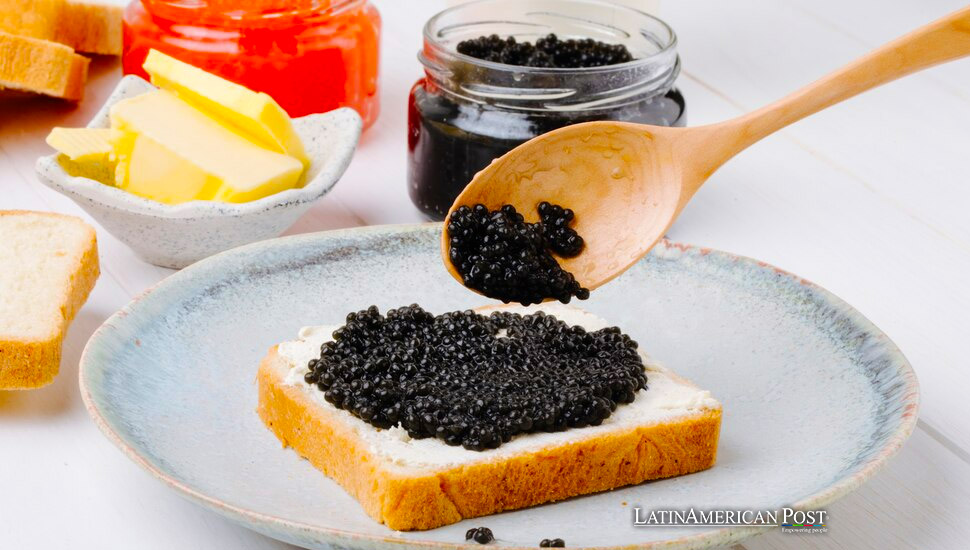Uruguay’s Caviar Industry Eyes Global Growth Post-Pandemic Recovery

As the global economy recovers, Uruguay’s caviar industry is seeing a resurgence in exports. Bolstered by growing production and demand, this niche market is poised for growth, with ambitions to conquer new territories across Asia and Latin America.
Uruguay, a small South American country known more for its beef and wine than luxury foods, is quietly making waves in the global caviar market. As the world begins to rebound from the economic disruptions caused by the COVID-19 pandemic, Uruguay’s top caviar producers are anticipating their first significant export growth in years. According to senior executives from the country’s two leading sturgeon farms that spoke to Bloomberg, this resurgence is fueled by increased production and heightened demand from key markets in Europe, Asia, and the United States.
Resurgence in Uruguay’s Caviar Exports
Though recovering from the pandemic’s impacts and previous underinvestment, the Uruguayan caviar industry is set to grow its exports by 35% this year. This means the country could export around 5.5 metric tons of caviar by the end of the year, a significant increase from recent years. While the industry remains below its 2019 peak, when exports were nearly double that amount, the future looks promising as new markets in Asia and Latin America begin to emerge.
Positioning in the Global Market
Uruguay’s sturgeon farms, such as Black River Caviar, have successfully positioned their products in the high-end segment of a market largely dominated by cheaper Chinese caviar, the world’s leading producer. Black River Caviar, for example, primarily sells to high-end restaurants owned by chefs and discerning individual customers who are willing to pay a premium for a product that aligns with their concerns about animal welfare, labor conditions, and traceability.
Expanding Production to Meet Global Demand
Meanwhile, Polanco Caviar, another leading producer, is planning to ramp up its production to as much as 12 metric tons per year by the end of the decade. In an interview with Bloomberg, Facundo Márquez, the company’s executive director, shared his vision of expanding sales to traditional wholesale buyers in the U.S. and Europe, as well as to new consumers in Asia, Latin America, and the Middle East, regions that have little historical tradition of caviar consumption.
“Our main bottleneck is production,” said Márquez. “The other day, someone from India called me saying, ‘We want to promote your caviar.’ I had to tell them, ‘I don’t have any to sell. What I produce, I’ve already sold.’”
The Global Caviar Market
This production shortfall is not unique to Uruguay. Globally, aquaculture now supplies most of the world’s caviar, due to stringent international restrictions on trading caviar from dwindling wild sturgeon populations. Farming sturgeon is an expensive endeavor, with popular species like the Russian and Siberian sturgeons taking nearly a decade to mature. China dominates the market thanks to massive investments in sturgeon farms made decades ago.
Uruguayan exports are expected to continue growing, driven by increased production from the country’s two sturgeon farms located along the Río Negro in the country’s interior. Black River Caviar alone aims to produce five or six metric tons annually by 2030 as production rebounds from high mortality rates caused by hot summers and underinvestment during the 2010s, noted company representative Mayo.
The global caviar market, while small and niche, is fiercely competitive. Uruguay’s high-quality caviar has carved out a space in this market, competing not just on price but on the quality and ethical standards that increasingly matter to consumers. With its ambitious plans for expansion, the country’s caviar industry could soon be a major player on the world stage, showcasing yet another dimension of Uruguay’s diverse agricultural sector.
As the industry continues to recover and expand, Uruguay’s caviar producers are setting their sights on new horizons, with hopes of not only reclaiming their pre-pandemic export levels but surpassing them. The success of these efforts could depend largely on how quickly production can scale to meet growing global demand, particularly in emerging markets where caviar consumption is on the rise.
Also read: Microsoft’s AI Lab in Uruguay Sets Global Benchmark for Innovation
Uruguay’s caviar industry may still be small, but with the right investments and market strategies, it has the potential to grow significantly in the coming years, tapping into the increasing global appetite for luxury foods.





